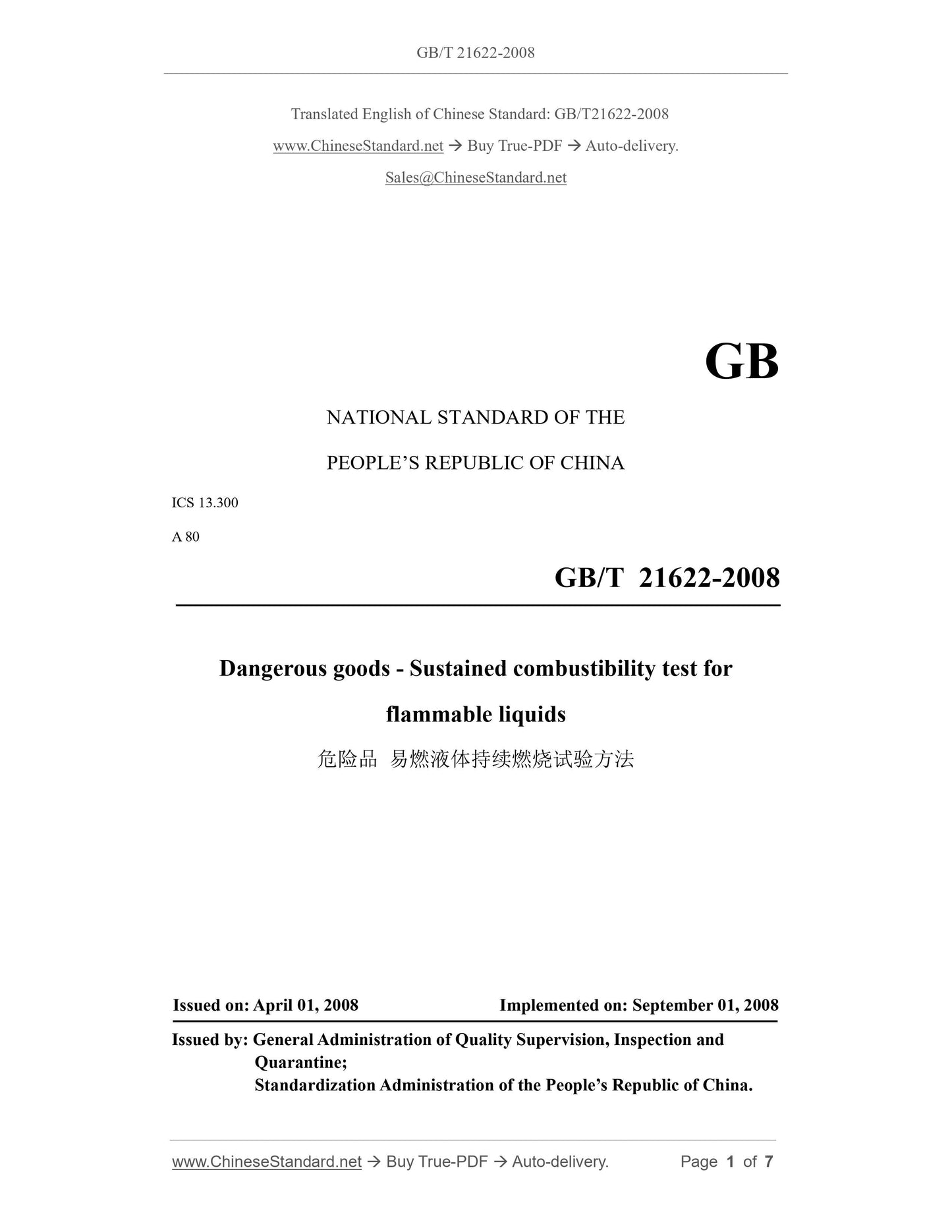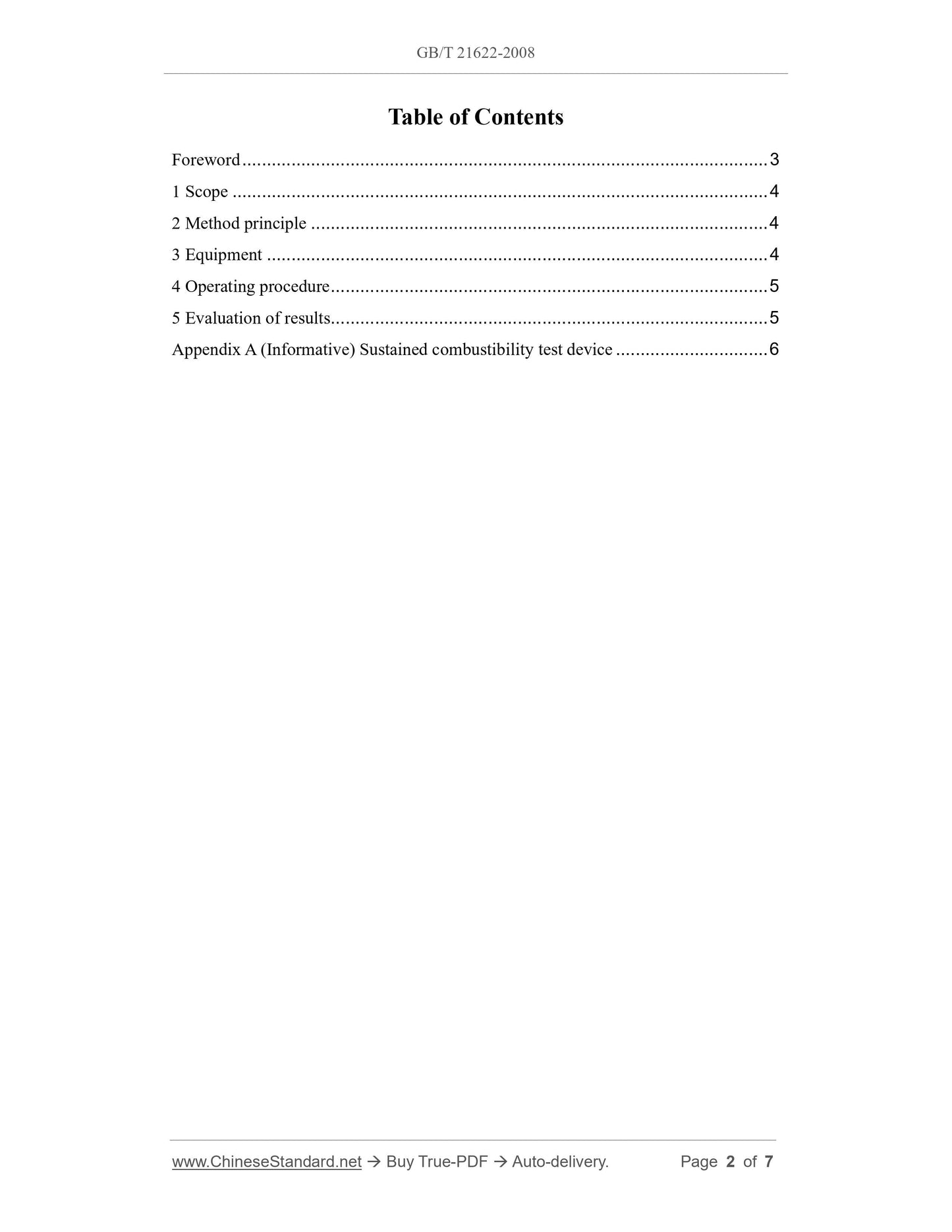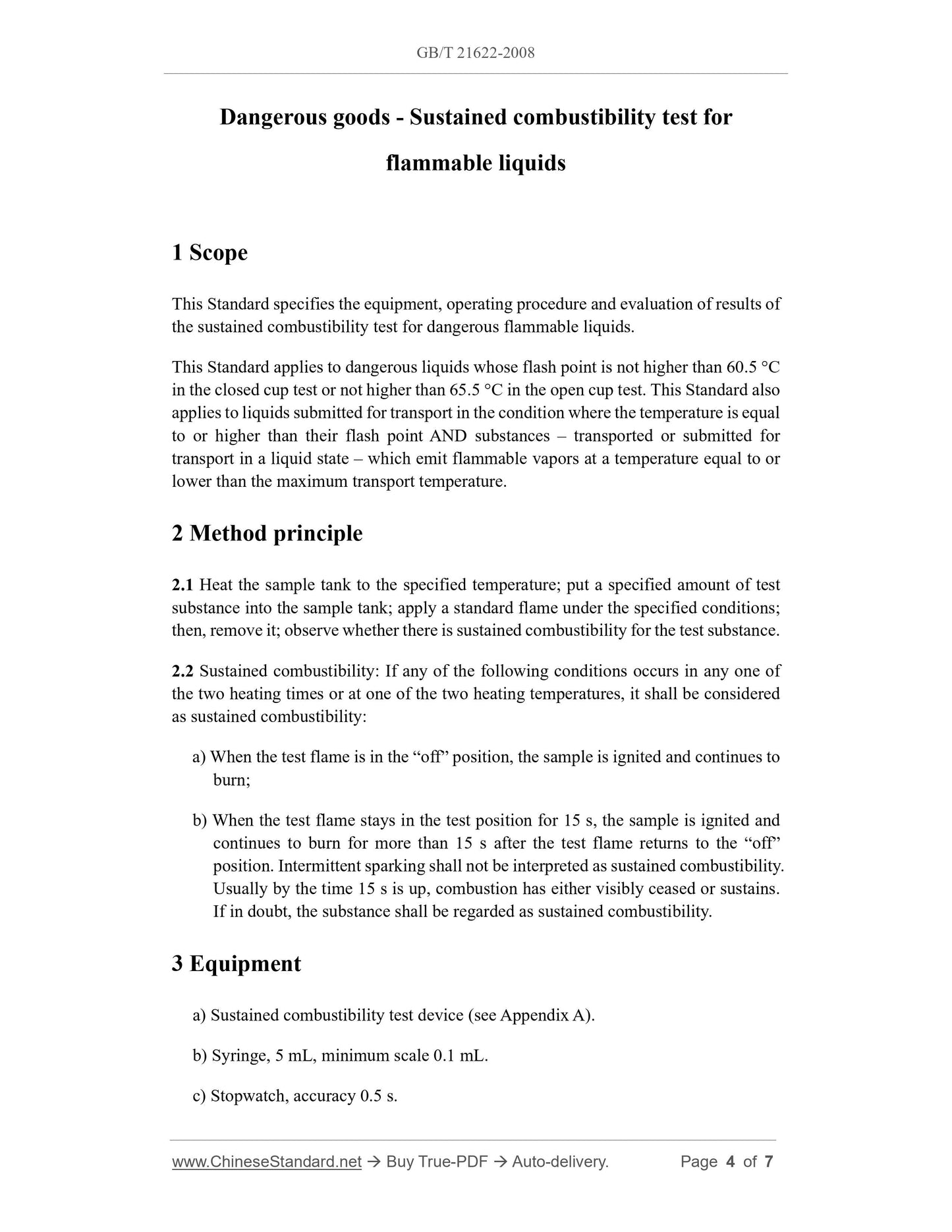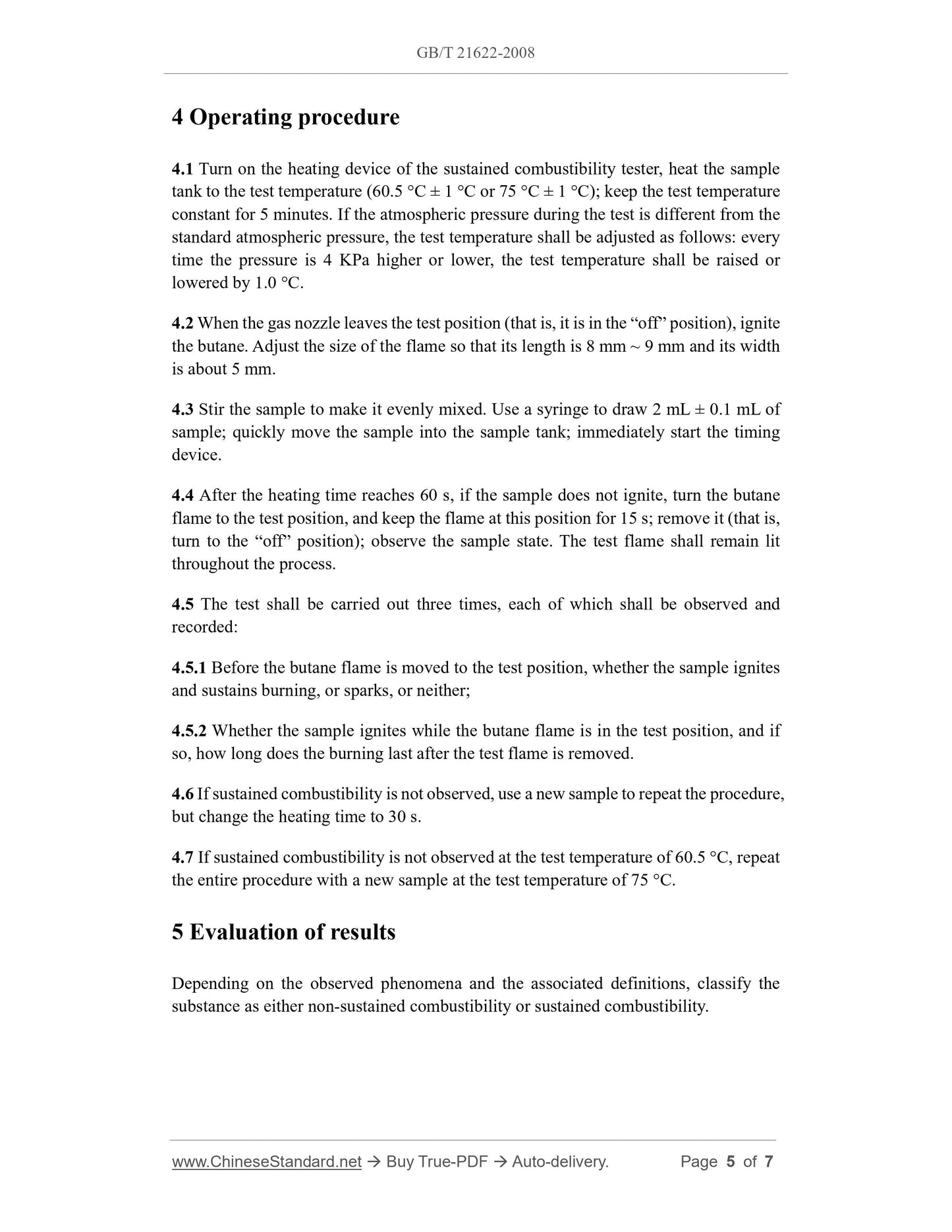1
/
of
4
www.ChineseStandard.us -- Field Test Asia Pte. Ltd.
GB/T 21622-2008 English PDF (GB/T21622-2008)
GB/T 21622-2008 English PDF (GB/T21622-2008)
Regular price
$70.00
Regular price
Sale price
$70.00
Unit price
/
per
Shipping calculated at checkout.
Couldn't load pickup availability
GB/T 21622-2008: Dangerous goods -- Test method for corrosion to metals
Delivery: 9 seconds. Download (and Email) true-PDF + Invoice.Get Quotation: Click GB/T 21622-2008 (Self-service in 1-minute)
Newer / historical versions: GB/T 21622-2008
Preview True-PDF
Scope
This Standard specifies the equipment, operating procedure and evaluation of results ofthe sustained combustibility test for dangerous flammable liquids.
This Standard applies to dangerous liquids whose flash point is not higher than 60.5 °C
in the closed cup test or not higher than 65.5 °C in the open cup test. This Standard also
applies to liquids submitted for transport in the condition where the temperature is equal
to or higher than their flash point AND substances – transported or submitted for
transport in a liquid state – which emit flammable vapors at a temperature equal to or
lower than the maximum transport temperature.
Basic Data
| Standard ID | GB/T 21622-2008 (GB/T21622-2008) |
| Description (Translated English) | Dangerous goods -- Test method for corrosion to metals |
| Sector / Industry | National Standard (Recommended) |
| Classification of Chinese Standard | A80 |
| Classification of International Standard | 13.300 |
| Word Count Estimation | 6,691 |
| Date of Issue | 2008-04-01 |
| Date of Implementation | 2008-09-01 |
| Adopted Standard | UNECE ST/SG/AC.10/11, NEQ |
| Regulation (derived from) | Announcement of Newly Approved National Standards No. 5, 2008 (No. 118 overall) |
| Issuing agency(ies) | General Administration of Quality Supervision, Inspection and Quarantine of the People's Republic of China, Standardization Administration of the People's Republic of China |
| Summary | This standard specifies the dangerous flammable liquids sustained combustion test equipment, procedures, and evaluation of the results. This standard applies to dangerous goods in a closed cup flash point of not more than 60. 5��C trials in open -cup test, or not more than 60. 5��C liquid. This standard is also applicable to a temperature equal to or above its flash point of liquids under the conditions for transport as well as transport of liquid at high temperatures or for transport, and at a temperature equal to or below the maximum transport temperature emit inflammable vapor. |
Share







